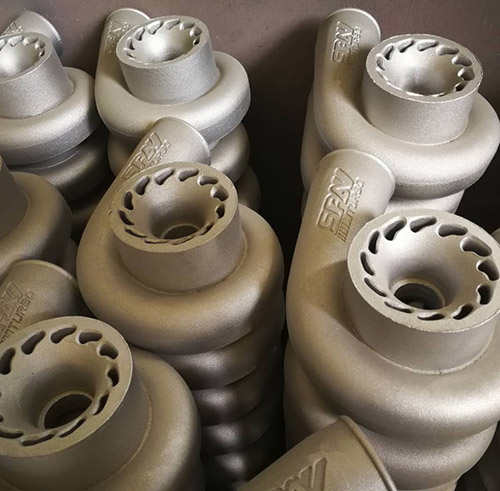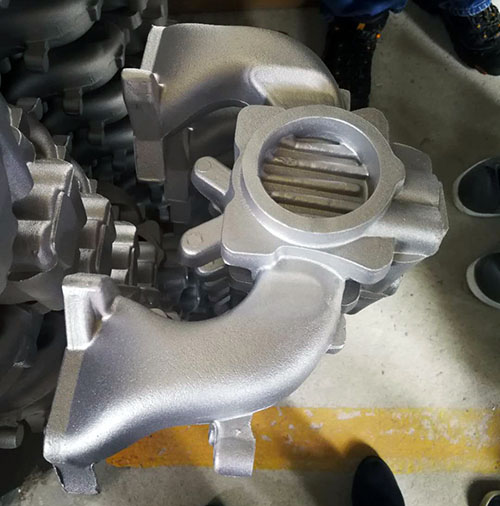A Mining Co., Ltd. is a mining enterprise mainly engaged in the selection of gold products. At present, the gold-bearing polymetallic sulfide ore produced by the company is selected from the ore by gold ore, lead gold concentrate and zinc concentrate. Mine and sulfur concentrate. The gold-bearing minerals are mainly galena and arsenopyrite. Since the separation of sulfur arsenic (pyrrhotite, pyrite and arsenopyrite separation) is not an effective solution, sulfur gold concentrate is not denominated sales, low gold recoveries only about 60%. In order to improve the recovery rate of gold and realize the effective recovery of gold in sulfur concentrate, this study aimed at high arsenic and sulfur concentrates, and broke through the separation of sulfur and arsenic as a technical route to explore the acquisition of arsenic gold concentrate products to improve the recovery rate of gold.
First, the nature of the sample
The main chemical element analysis and particle size analysis of high arsenic sulfide concentrate (hereinafter referred to as material) are shown in Table 1 and Table 2, respectively.

The material sample contains 36.30% sulfur, 6.72% arsenic and 2.6g/t gold. It is a high-arsenic sulfur concentrate, and the poisonous sand is the carrier mineral of gold. For the purposes of this sample, the test is intended to separate the arsenopyrite and pyrite by flotation, so that the gold is enriched in the arsenopyrite as an arsenic gold concentrate.
It can be seen from the data in Table 2 that the sample has a fine particle size, the content of -0.074 mm (-200 mesh) is 68.24%, and the distribution rates of sulfur and arsenic are 72.56% and 76.00%, respectively. Among them, the distribution rate of sulfur and arsenic in -0.043mm (-325 mesh) is also higher, reaching 32.52% and 34.62% respectively. From the perspective of flotation, this part of the material will affect the selectivity of the inhibitor during separation, resulting in It is difficult to separate.
Second, the determination of the separation method and experimental research content
(A) The principle of the process for the beneficiation company site mixed gold lead flotation - separating gold lead, copper sulfate activation float floating tail, zinc sulfur tail slurried fall under acidic conditions. Based on the premise of not changing the original production process, this study uses a arsenic-suppressing and sulphur-suppressing scheme to conduct experimental research, focusing on the inhibitors of arsenic-sulfur separation flotation.
The experimental study on the separation process of two kinds of arsenic separation by alkali method and acid method was carried out by comparison. The results showed that the acid method was suitable, and the Y-As inhibitor was screened out among the inhibitors of acid sulphur and arsenic inhibition. good.
(II) Analysis and results of separation test of sulfur and arsenic
1. Inhibitor dosage test
Y-As was used as an inhibitor of toxic sand, and the pH of the slurry, the amount of Y-As inhibitor and the dosage of the collector were tested respectively. The flow chart of the crude selection conditions of Y-As inhibitor is shown in Figure 1. The results are shown in Figure 2.


Figure 2 shows that increasing the amount of inhibitor, the recovery rate of sulfur concentrate has a downward trend. When the amount of Y-As is 2kg/(t· ore), the arsenic content of sulfur concentrate is 1.65%, and the recovery rate of arsenic is 69.36%.
2, select test
The foam after the two rough selections contained 1.65% of arsenic. Therefore, the selected Y-As dosage test was carried out, and the selected test procedure was added to the selection of the conditional test procedure of Fig. 1. The test results are shown in Fig. 3.
It can be seen from Fig. 3 that the selective addition of Y-As is beneficial to inhibit the arsenopyrite. When Y-As is added at 100g/t, the arsenic content in the sulfur concentrate is about 1.00%, and the recovery rate of arsenic is about 9.00%. The dosage is continuously increased, and the arsenic grade and its recovery rate are basically unchanged. Therefore, the determination is fine. The amount of Y-As selected is preferably 100 g/t.
(4) Closed circuit test
In view of the fact that some pyrite in the ore is difficult to activate and some of the toxic sand is difficult to suppress, the closed-circuit test is carried out according to the selected test results. The test procedure for separation and closure of sulfur and arsenic is shown in Figure 4 for the two coarse and one fine, and the test results are shown in Table 3.



It can be seen from the data in Table 3 that the sulfur concentrate contains S42.85% after two rough selections, the sulfur recovery rate is 85.51%, containing As1.08%, Au0.42g/t; tailings as arsenic gold concentrate Mine, the yield is 27.52%, the arsenic grade is 20.34%, contains Au8.66g/t, the arsenic recovery rate is 87.73%, the gold recovery rate is 88.67%, and the sulfur loss rate is only 14.49%.
Third, the conclusion
(1) The sample is a high-arsenic sulfur concentrate containing S36.30%, As6.72%, Au2.6g/t, the arsenic mineral is mainly arsenopyrite, and is a gold-bearing mineral, so the separation of sulfur and arsenic is to increase gold. The necessary route for recovery.
(2) Y-As is a combination inhibitor composed of inorganic salts and organic inhibitors. It is non-toxic, inexpensive and has a wide range of sources. This experimental study shows that in acidic pulp, Y-As combination inhibitor has a strong inhibitory effect on arsenopyrite.
(3) Small closed-circuit test obtained sulfur concentrate containing S42.85%, sulfur recovery rate 85.51%, As1.08%, Au0.42%; tailings arsenic grade 20.34%, containing Au8.66g/t, arsenic recovery 87.73%, gold recovery rate of 88.67%, as the sales of arsenic gold concentrate, to achieve the expected comprehensive recovery of gold.
Aluminium Castings, processing ways mainly include Sand Castings, Low Pressure Castings, and die castings / High Pressure Castings.
Examples of items mainly are aluminium housing, pump gear box, pump housing, valve body, marine parts, Auto Parts , and turbocharger compressor wheel, bearing housing and compressor housing etc..
Die casting is the most important processing way for aluminium castings.
Advantages of die casting:
- Excellent dimensional accuracy (depend on casting material, but typically 0.1 mm for the first 2.5 cm and 0.02 mm for each additional centimeter.
- Smooth cast surfaces.
- Thinner walls can be cast as compared to sand and permanent mold casting.
- Inserts can be cast-in.
- Reduces or eliminates secondary machining operations.
- Rapid production rates.
- Casting tensile strength as high as 415 megapascals (60 ksi).
- Casting of low fluidity metals.
-

-

Aluminium Castings
Aluminium Castings,Aluminium Die Casting,Cast Aluminium,Aluminium Casting Part
Dandong Hengrui Machinery Co., Ltd. , http://www.hrcastings.com
![<?echo $_SERVER['SERVER_NAME'];?>](/template/twentyseventeen/skin/images/header.jpg)